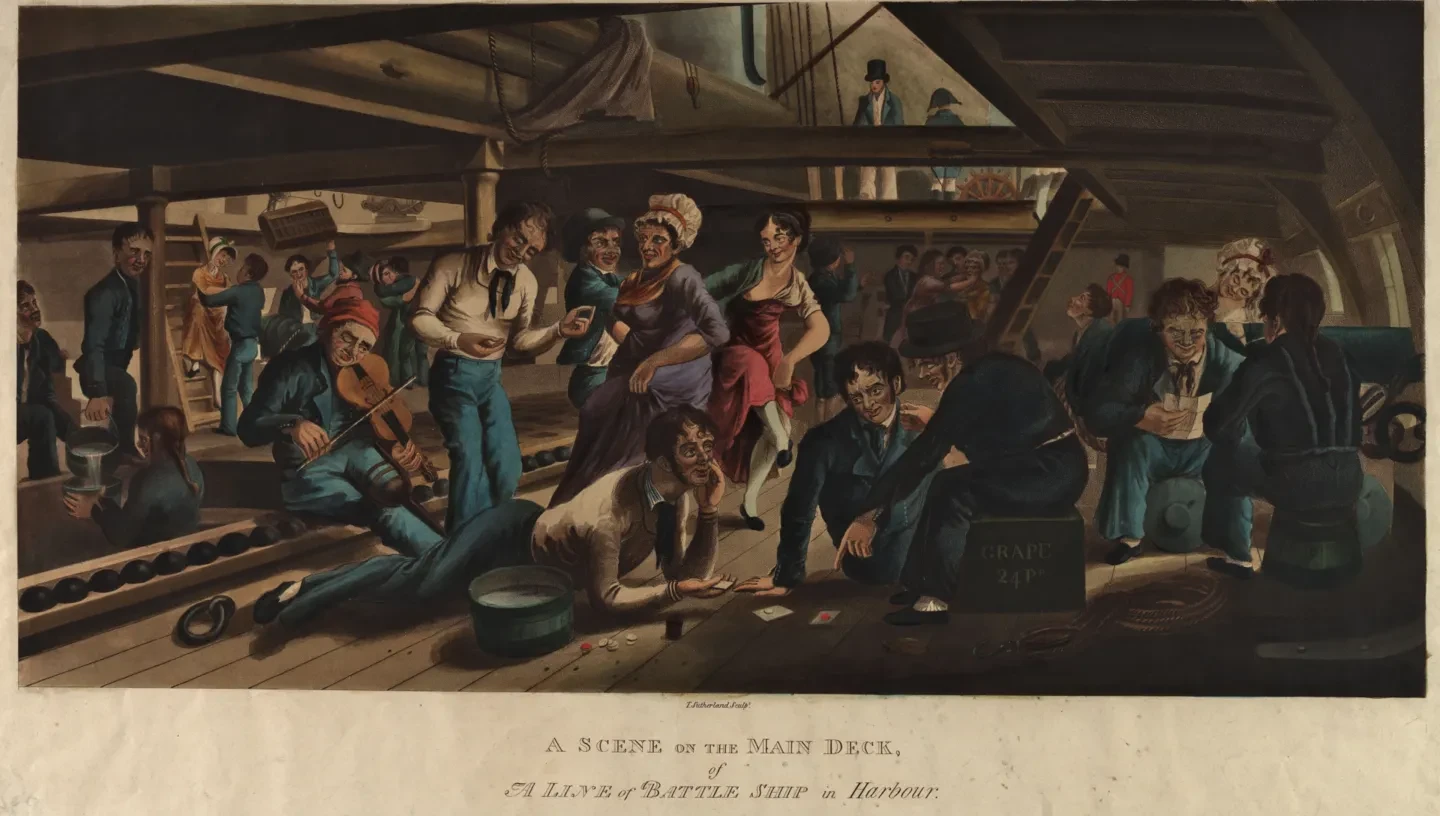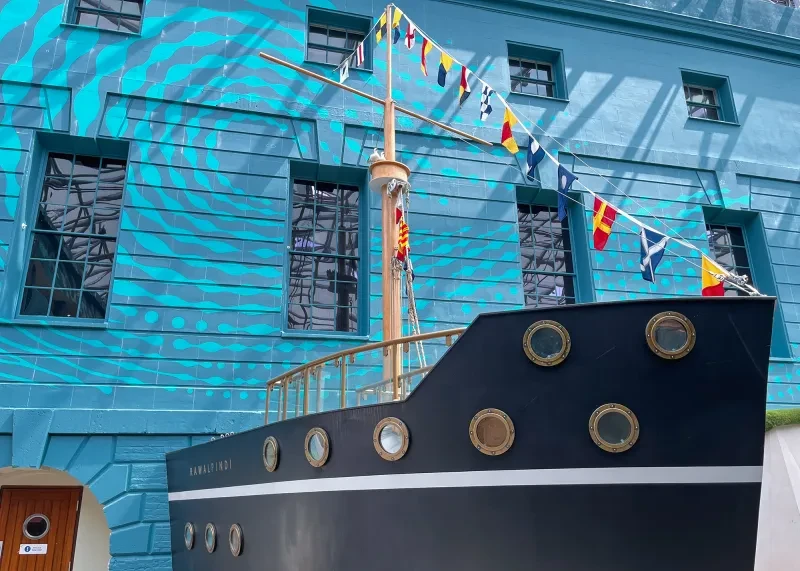
Life at sea during the age of sail was filled with hardship. Sailors had to accept cramped conditions, disease, poor food and pay, and bad weather.
Over a period of hundreds of years, seafarers from the age of the early explorers to the time of the Battle of Trafalgar in 1805, shared many common experiences. Men working at sea had much to endure; cut off from normal life on shore for months, even years, they had to accept cramped conditions, disease, poor food and pay. Above all, they faced the daily dangers of sea and weather.
What was scurvy?
Why were punishments so harsh at sea?
A seaman's life was hard, and he had to be tough to survive, so ship's officers kept strict discipline on board. In this way they hoped to keep morale high and prevent mutiny.
Seamen could be ‘tarred and feathered’, tied to a rope, swung overboard and ducked or ‘keel-hauled’, dragged round the underneath of the ship. Flogging was the most common, with the whole crew often made to watch. A rope's end was used, or the infamous ‘cat o’ nine tails’. A seaman found guilty of mutiny or murder would be hanged from the yard arm.
What food was there on board a ship?
The main rations were salt beef or pork, cheese, fish, ale and some form of ship's biscuit. The quality of food deteriorated because of storage problems, lack of ventilation, and poor drainage. It was also affected by the presence of rats and other vermin on board.
What jobs were there on board?
Typical jobs on board included cook, parson, surgeon, master gunner, boatswain (in charge of the sails), carpenter and quartermaster. Other members of the crew would, of course, carry out all the duties, including keeping watch, handling sails, and cleaning decks.
It is interesting to note that the names for jobs of men responsible for working a ship (boatswain, coxswain, seamen) are of Anglo-Saxon origin, while those of officers (Captain, Lieutenant, Admiral) are of Norman-French origin. This is an indication of a class distinction between roles on board.
What were press gangs?
It was not always possible to fill ships’ crews with volunteers, especially in wartime, so the law allowed gangs to seize men and force them to join a ship. Pressing peaked in the 18th century but it was still going on as late as 1850.
What happened to sick seamen?
There was a great deal of sickness at sea. Seamen were often cold and wet, rats carried disease, and a poor diet not only caused malnutrition, but specific illnesses such as scurvy – caused by a lack of vitamin C in the diet.
As well as injury from shipboard accidents, there was risk of death or maiming in times of battle. Ships' surgeons worked in cramped and filthy conditions with no anaesthetic, so infection and gangrene was commonplace.
What sort of pay did seamen get?
By the end of the 1700s, pay on a naval ship was less than that on a merchant ship. However, as well as basic wages, sailors would expect to have a share of prize money or booty from captured enemy vessels.
What did seamen do off duty?
Traditionally hard-drinking and tough, seamen made the best of their cramped living quarters, enjoying games of dice and cards, telling tales, playing musical instruments, carving, drawing, practising knots or model making. They also sang ‘sea shanties’ – rhythmic work songs to help repetitive tasks such as hauling on ropes.





